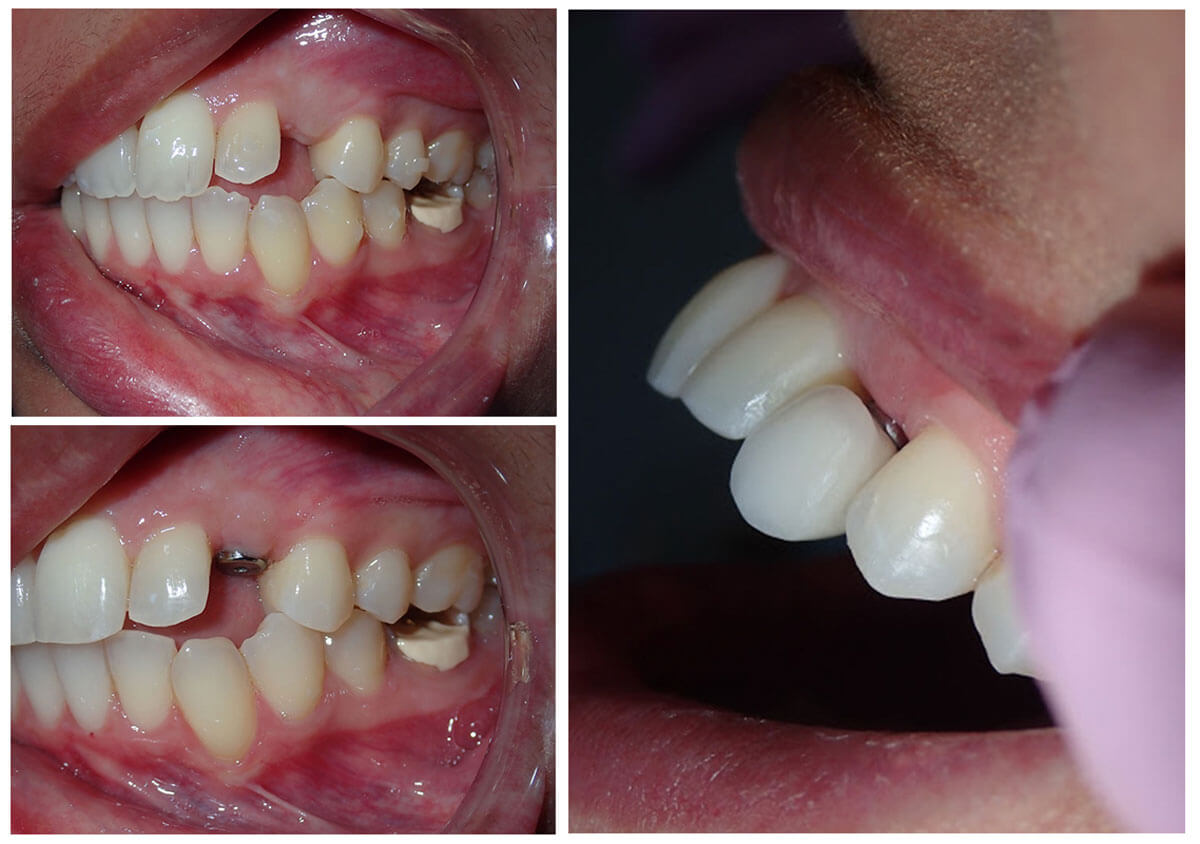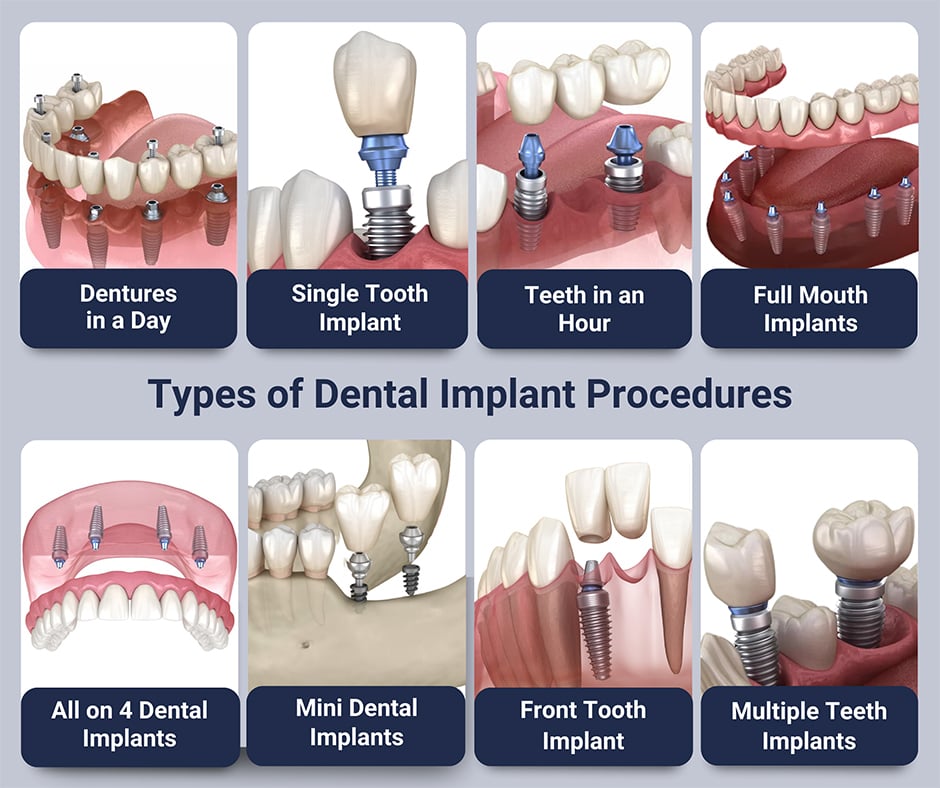The Definitive Guide to Dental Implants
The Definitive Guide to Dental Implants
Blog Article
Some Known Details About Dental Implants
Table of ContentsIndicators on Dental Implants You Should KnowWhat Does Dental Implants Mean?The 7-Minute Rule for Dental ImplantsThe Basic Principles Of Dental Implants
are clinical tools operatively dental implanted right into the jaw to recover an individual's ability to chew or their look. They give support for man-made (fake) teeth, such as crowns, bridges, or dentures. When a tooth is lost due to injury or illness, a person can experience difficulties such as quick bone loss, defective speech, or modifications to chewing patterns that cause discomfort.
Structure of The Oral Implant System picking oral implants, talk with your dental company regarding the prospective advantages and dangers, and whether you are a prospect for the procedure. Points to take into consideration: Your total wellness is an essential consider identifying whether you are an excellent prospect for oral implants, the length of time it will require to recover, and how long the implant might remain in place.
Smoking may impact the healing process and decrease the lasting success of the implant. The healing procedure for the implant body might take numerous months or longer, throughout which time you generally have a temporary joint instead of the tooth. the oral implant treatment: Very carefully adhere to the dental hygiene guidelines offered to you by your dental copyright.
Things about Dental Implants
Implant failing can result in the need for another procedure to deal with or change the implant system. Brings back the capacity to eat Restores cosmetic appearance Assists maintain the jawbone from diminishing as a result of bone loss Protects the health and wellness of the bordering bone and gums Aids keep surrounding (nearby) teeth steady Boosts high quality of life Damage to bordering natural teeth during dental implant positioning Injury to the surrounding tissues during surgery, such as sinus opening Injury throughout surgery (for example, crack of surrounding jawbone) Insufficient function, such as seeming like the teeth do not bite together normally A sensation that the tooth is loose or twisting in position resulting from an abutment screw loosening Implant body failing (looseness of the dental implant body) as a result of systemic infection, which might be more probable in people with unchecked diabetes mellitus due to check my source local infection in bone and gum tissues supporting the dental implant body as a result of postponed recovery, which may be more most likely in individuals who smoke Difficulty cleaning up the periodontals around the implant, causing bad dental hygiene Unattended periodontal illness Post-surgical numbness due to nerve impingement or damages Always inform healthcare carriers and imaging technicians that you have oral implants before any kind of magnetic resonance imaging (MRI) or x-ray treatments.
FDA is not familiar with any kind of negative events reported for MRI or x-ray procedures with dental implants. Dental implants systems are normally made from materials that follow global consensus criteria of the International Company for Standardization (ISO) or ASTM International. These standards have details of what makes a safe product.
Oral implant systems are evaluated according to global consensus standards. Biocompatibility screening, to reveal that bodily call with the tool does not trigger difficulties like irritation or sensitive response, is part of the assessment that helps make sure the materials in the oral implant system are safe and do not cause adverse impacts when implanted in people.

7 Simple Techniques For Dental Implants
Some individuals are not eligible for oral implant surgical treatment. It is for oral specialists to operate people with: intense illnessuncontrollable metabolic diseasebone or soft cells condition or infectionIf these issues are fixed, an individual can have the surgery. Dental Implants. In, oral specialists avoid operating individuals with: If individuals with any one of the above undertake dental implant surgery, there is a higher danger of the implant failing
Some individuals have a jawbone abnormality that stops enough bone for an implant from creating. In such instances, a surgeon might require to perform a ridge modification. This entails raising the periodontal to reveal the area of flawed bone. The specialist will then utilize a bone or bone alternative to repair and accumulate the location.
Oral implant surgical procedure is an individualized process. It's not the very same for everyone. The adhering to offers a general overview of what you can expect your dental expert, oral specialist, periodontist or prosthodontist to do: Place the implant operatively. Give you time to heal. Connect the blog post and final crown, bridge or denture.
Next off, your cosmetic surgeon will thoroughly place the dental implant into your jaw. Lastly, your surgeon will reposition click now your periodontals and close the incision with stitches. If your dental implant is useful link near the front of your mouth, your dental professional will make a temporary tooth for you to wear up until you heal. That way, you will not have a gap in your smile while you recoup.
What Does Dental Implants Mean?
During the healing stage, your jawbone should fuse to the dental implant. This procedure can take anywhere from 3 to 9 months.
Once your implant heals, your dental practitioner can affix the abutment (small connector post) and your final restoration (crown, bridge or denture). This typically takes about one hour to complete and may require a second small surgical treatment. You shouldn't really feel any kind of pain during your dental implant treatment because your copyright will use medication to numb your gum tissues.
Report this page